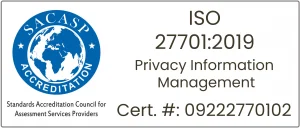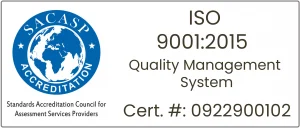© 2025 Macro Global. All Rights Reserved.
Traverse the article
Executive Summary
The PRA’s transitional period for Operational Resilience ended on 31 March 2025, closing a chapter and opening a far more demanding one. From this point on, financial institutions must demonstrate resilience, not just document it.
Regulators now expect proof that firms can stay within their impact tolerances through severe but plausible disruptions. It’s not about compliance snapshots anymore. It is about ongoing assurance. And that assurance must live inside the organisation’s culture, governance, and technology stack.
For many leaders, the question now is blunt: Have we genuinely met the PRA’s resilience expectations and can cloud adoption help us get ahead of them?
This piece looks at that question through the lens of the people who carry that burden CCOs, CTOs, CISOs, MLROs, and Heads of Regulatory Reporting, exploring how cloud-first SCV systems are transforming compliance from a yearly exercise into an everyday discipline.
The Regulatory Landscape for PRA and FSCS Expectations in SCV Reporting
Regulators have been clear that resilience must be demonstrated in near real time.
As financial institutions modernise, the PRA and FSCS expect firms to handle disruption without losing control of depositor data. That requires systems that are fast, transparent, and engineered for reliability under pressure. This has made banking compliance and regulatory compliance much more demanding.
The pressure is visible across the sector. Many institutions still struggle to bridge the gap between legacy data infrastructure and the PRA’s expectation for immediate readiness. Implemented correctly,cloud based SCV systems are becoming the practical bridge.
Inside the PRA’s New Standard for SCV Compliance and Reporting
The PRA’s expectations have sharpened considerably. It is no longer enough to prove completeness and accuracy. Firms must maintain SCV compliance across changing environments, vendors, and operating conditions.
Beyond Completeness
The regulator wants data that mirrors operational reality. That means moving from static reports to real time reconciliation across every source system, central to accurate SCV reporting.
Timeliness as a Living Obligation
Firms are now expected to maintain perpetual readiness. An SCV solution that is always payout-ready, not one refreshed on schedule. This shift demands continuous automation and event-driven validation.
Reliability through Intelligent Controls
The PRA wants embedded validation, not reactive error correction. Systems should detect anomalies and schema breaks instantly, not after audit review.
End-to-End Transparency
Traceability has become non-negotiable. Every data change, from ingestion to reporting, must leave a digital footprint that regulators can retrace.
Outsourcing Accountability
Under SS2/21 and the PRA’s 2025/26 Business Plan, cloud and third-party oversight now sit at board level. The real challenge for many CIOs isn’t technology, it is proving that governance still lives inside the firm even when the workload doesn’t.
In short, the PRA isn’t asking for better data. It is asking for control under stress.
FSCS Readiness: Accuracy Under Pressure
When a bank fails, the FSCS cannot wait for reconciliation cycles. Accurate single customer view data underpins effective FSCS reporting and depositor protection.
Cloud adoption is transforming that readiness from manual to automatic.
Faster Compensation, Fewer Errors
With unified ingestion across core and savings systems, payouts can now be calculated instantly. The automation isn’t just efficient — it’s what makes next-day readiness possible.
Integrity That Scales
Cloud-native validation and de-duplication reduce mismatches that once took days to fix. In an FSCS event, that precision directly supports financial stability.
Testing on Demand
The PRA and FSCS expect regular dry runs. With elastic infrastructure, firms can simulate payout events at scale, without disrupting production or waiting for weekend windows.
Audit Without Friction
Modern SCV environments produce version-controlled files and traceable lineage by default. That’s not paperwork that’s evidence the regulator can trust.
The FSCS wants proof that your payout file would work tomorrow morning. Cloud-based SCV makes that a question of process, not panic.
When FSCS moves fast, can your data keep up?
How the PRA Now Views the Cloud
The PRA now accepts that the cloud can strengthen resilience, provided firms can demonstrate control.
Policy driven governance, immutable lineage, multi zone resilience, vendor independence, and continuous assurance now shape cloud expectations. These directly influence banking compliance standards.
The PRA’s message is simple: use the cloud, but do not outsource accountability.
Caution has given way to conditional confidence. The PRA accepts that the cloud can deliver control and resilience but only for firms that can demonstrate it.
Policy-Driven Control
Governance must be built into the architecture: encryption, access control, and audit logging defined as code, not policy PDFs.
Immutable Lineage
Every depositor record should be forensically traceable, with full version history for reconstruction after any incident.
Resilience by Design
The PRA expects multi-zone replication and failover so a single-region outage can’t breach impact tolerances.
Vendor Independence
Firms must prove they can exit any provider without losing custody of their data. Portability and exit testing are now part of compliance, not IT housekeeping.
Continuous Assurance
Annual audits no longer cut it. Regulators expect firms to monitor configuration drift, data behaviour, and control adherence 24/7.
The Real Risk Lens: Data Sovereignty, Vendors, and Security
As SCV moves to the cloud, firms are learning that compliance doesn’t travel automatically with it.
Data Sovereignty
Your depositor data must remain within UK and GDPR boundaries, with visibility into every replica, endpoint, and region. Geo-fencing and retrieval rights are not nice-to-haves they’re obligations.
Vendor Governance
Third-party oversight can’t live in procurement anymore. Boards need risk frameworks, audit rights, and shared-responsibility matrices that spell out who controls what in the cloud stack.
Encryption and Continuity
Regulators expect encryption everywhere in transit, at rest, and in use combined with telemetry that flags abnormal activity the moment it happens. Multi-region replication and immutable backups are how firms now demonstrate impact-tolerance alignment.
In short, the PRA wants proof that firms can stay operational even when their vendors can’t.
FSCS Readiness in a Cloud First SCV Environment
FSCS compliance is shifting from static readiness to living proof. Regulators want data that’s not only accurate and retrievable, but stress-tested under real conditions.
A cloud-first model helps institutions get there by embedding resilience into infrastructure itself.
- Distributed recovery keeps systems available even in regional failures.
- Policy-as-code automates compliance evidence.
- Elastic compute ensures compensation files for millions of depositors finish within the 24-hour payout window.
This isn’t theory anymore — it’s what operational assurance looks like in practice.
Building a Dynamic SCV Framework for Better SCV Reporting
A strong SCV environment now acts more like a living network than a static file generator.
- Real-time ingestion keeps depositor records reconciled across systems.
- Ongoing validation ensures accuracy even as data shifts.
- Regulatory mapping engines update when PRA or FSCS rules evolve.
- Immutable audit trails mean every decision and transformation is retrievable.
It’s how a bank shows it can protect customers even when the lights flicker.
Designing for Security, Compliance, and Trust
Post-2025, firms can’t bolt resilience on it has to be designed in. That means engineering trust, transparency, and traceability into every layer.
Principles that matter most:
- Multi-layer security and tokenisation for depositor data.
- Built-in validation within DevSecOps pipelines.
- Retention systems that preserve audit evidence for years, not months.
For many firms, the hardest part isn’t technology it’s proving the controls work every day.
A Practical SCV Compliance Checklist for Leaders
- Adopt regulatory-aware data platforms with automated reporting.
- Design systems for redundancy and PRA-aligned recovery.
- Monitor data pipelines and anomalies with intelligent automation.
- Maintain a single source of truth with full lineage.
- Preserve immutable audit records with long-term retention.
- Document and test vendor accountability under SS2/21.
- Apply zero-trust security across every access layer.
- Embed compliance validation in every deployment.
- Run FSCS payout simulations regularly and learn from them.
That’s what operational maturity looks like in a cloud-first age.
Macro Global’s Secure-by-Design Approach
Innovation and compliance don’t have to fight each other. Macro Global’s SCV Enterprise Suite shows how they can align. Built on a secure-by-design architecture, it helps financial institutions modernise while maintaining control, transparency, and regulatory confidence.
Key features:
- API-first, cloud-agnostic integration across hybrid environments.
- Elastic scalability for FSCS test loads and event peaks.
- Regulatory template library mapped to PRA–FSCS standards.
- Embedded validation and automated policy enforcement.
In practice, it means your SCV framework evolves with the rulebook, not behind it.
Conclusion
The compliance race has changed gears. The 31 March 2025 milestone wasn’t an end it was a starting gun.
Firms that treat operational resilience as a continuous discipline, not a regulatory burden, will define the next decade of depositor protection. Those that architect for visibility, control, and agility will thrive when the unexpected hits.
With Macro Global’s cloud-ready SCV Enterprise Suite, financial institutions can bridge that gap automating compliance, maintaining depositor trust, and ensuring operational continuity no matter what comes next.
Resilience is no longer a checkbox. It’s the test that never stops.
SCV data quality matters more than ever
We help you strengthen your FSCS SCV Compliance.
Transform your FSCS SCV reporting today with our all-in-one Enterprise Solution Suite! Reach us to know more!
Related Resources
WHITEPAPER
Cloud vs On-Prem FSCS SCV Reporting: A Strategic Guide for UK Financial Institutions
BLOG
How to Ensure Security and Compliance in SCV Data for FSCS Requirements
BLOG
Choosing the Right FSCS Regulatory Reporting Software: A Comprehensive Guide
Related Posts
13 November 2025 FSCS Single Customer ViewRegulatory Technology
FSCS Outlook – November 2025: Strategic Implications for UK Financial Institutions
Key insights from the FSCS November 2025 Outlook and what financial institutions must improve for FSCS SCV regulatory compliance.
29 September 2025 FSCS Single Customer ViewRegulatory Technology
FSCS 2025 Compensation Limit Updates: Execution Strategies for Financial Institutions
From Dec 2025, FSCS protection rises to £110k and THB to £1.4m. Discover how CROs and CTOs can ensure depositor protection, SCV readiness, and auditability.
18 September 2025 FSCS Single Customer ViewRegulatory Technology
FSCS Updates 2025: What Depositor Protection Changes and Compensation Limit Increases Mean for SCV Reporting
Are you ready for FSCS 2025? Understand the new limits, THB complexities, and SCV reporting demands and how SCV Alliance v25 keeps you ahead.














